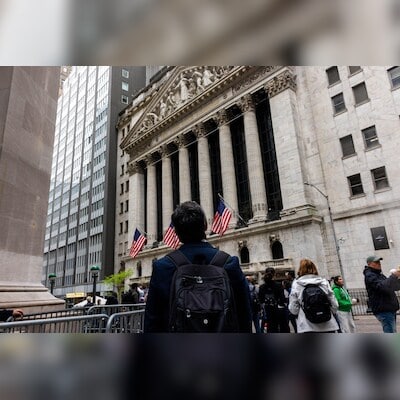For those on Wall Street clinging to the bull case on the economy, life is getting harder.
Troubling data — long foretold in the bond and commodity markets — woke traders across risky assets up from their slumber this week, in the worst performance for stocks since the 2023 regional bank crisis.
After rebounding from the early-August swoon, traders succumbed to growth fears due to a steady drumbeat of dispiriting economic news, particularly from the labour market. The S&P 500 fell for four straight days, credit spreads widened at the fastest clip since early August, and an index of computer chip makers plunged 12 per cent —the most since the pandemic meltdown.
With the stock benchmark up 13 per cent this year, the gyrations are a mere blip in bulled-up charts, and risk-sensitive assets are still largely pricing in a soft landing ahead. Yet the trading action — especially on Friday — was a rare instance of accord among cross-asset investors, who have never been more divided about the economy’s future since 2019, according to one measure.
As more than two years of hawkish Federal Reserve (Fed) policy take their toll, equities last week — dragged down by economically sensitive companies — joined longer-lasting market tumbles, afflicting oil, copper, and bond yields for more than a month.
“Investors may be waking up to the recession risk right now, but only after hitting the snooze button 10 times,” said Michael O’Rourke, chief market strategist at JonesTrading. “The environment has only deteriorated when you consider both the economic data and subsequent earnings reports.”
Bond investors — historically dubbed the smart money for their propensity to foresee economic shifts — priced in faster interest-rate cuts. This pushed two-year Treasury yields to the lowest level since 2022. The commodity complex similarly sent warning signs on the outlook for the consumption and investment cycle, with oil erasing all of its 2024 gains and copper falling in 13 of the last 16 weeks.
While markets have charted different courses in 2024, last week’s move has an obvious precursor: early August’s labour market weakness. The latest flare-up reflects concerns that the economy may be grinding to a halt too quickly for the Fed to rescue it without urgent policy redress.
JPMorgan Chase & Co.’s model, which compares asset movements to past cycles, showed that as of Wednesday, recession odds were relatively low in equities and investment-grade credit (9 per cent) but higher in commodities and government bonds (62 per cent and 70 per cent, respectively).
“I think no market is really pricing in a reasonable chance of a recession, but the totality of data suggests that risks of a recession are growing,” said Priya Misra, portfolio manager at JPMorgan Asset Management.
The divergence between stocks and bonds is noticeable, with the S&P 500 ending August at an all-time high and two-year Treasuries reflecting the conviction that Jerome Powell & Co. will be forced to enact a faster-than-expected pace of rate cuts. The yield curve is normalising, raising fresh questions about its reliability as a harbinger of recession.
First Published: Sep 08 2024 | 5:05 PM IST
Note:- (Not all news on the site expresses the point of view of the site, but we transmit this news automatically and translate it through programmatic technology on the site and not from a human editor. The content is auto-generated from a syndicated feed.))



